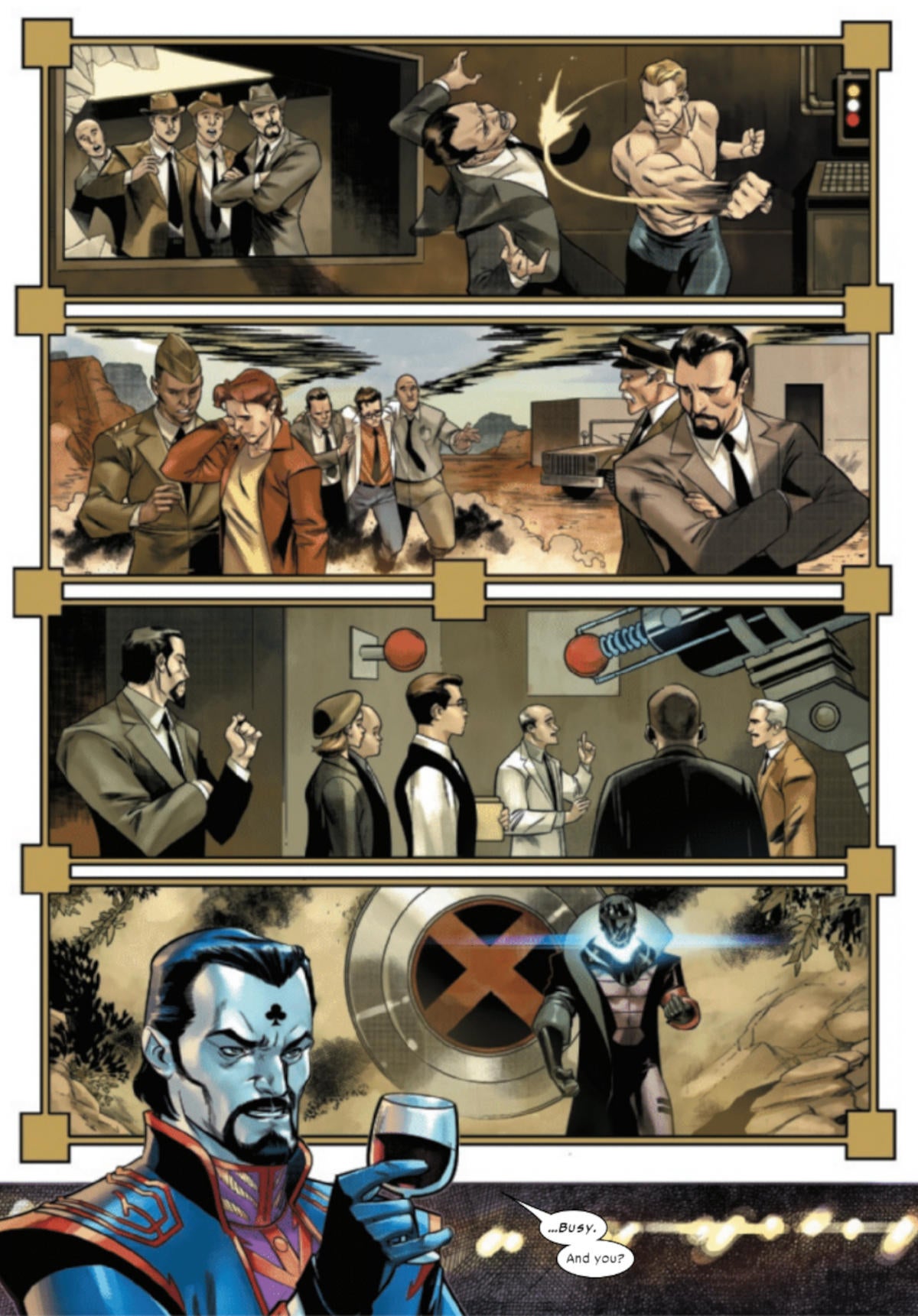X-Men Teases One Villain's Influence In The Creation of Key Marvel Heroes
Marvel's X-Men comics have done some the biggest retconning of X-Men and Marvel lore than we've ever seen. Thanks to Jonathan Hickman's "House of X" reboot event, the entire history of the X-Men Universe, its heroes and villains, has been reframed. One of the most pivotal changes was having the X-Men welcome some of their biggest villains into their new mutant nation, Krakoa, and extending that offer to Mister Sinister was one of the most controversial changes that were made.
Unfortunately, welcoming Sinister into Krakoa turned out to be a bigger mistake than the X-Men could have ever guessed: Sinister created his own splinter timeline in which he infected key leaders and heroes with his personal corruption, turning Earth (and then the galaxy) into Sinister versions of what they were. In the midst of that, books like Immortal X-Men revealed that Mister Sinister's story has been a lie, all along!
Sinister is not the geneticist Nathaniel Essex, who was transformed by Apocalypse after failing to save his young son from a sickness: "Sinister" is one of four total clones the original Nathaniel Essex created before Apocalypse's power destroyed him. Now in X-Men: Before the Fall – The Sinister Four #1, we get the most concrete explanation yet that Essex's four clones were meant to take for separate approaches to solving the looming threat of A.I. supremacy over humanity:
- Mister Sinister (the diamond mark) – Sinister was a monstrous creature meant to study "The Essex Men," Nathaniel's early name for mutants. By manipulating mutant genetics, Sinister has tried to create mutants (or Chimera hybrids) stronger than machines.
- Doctor Stasis (the clubs mark) – Stasis was created to think he is still Nathaniel Essex, and pursued studies/manipulation of human potential, to create a "Post-human" form stronger than machines.
- Orbis Stellaris (the spades mark) – the most "human-looking" clone of Nathaniel Essex, Orbis didn't use cloning and genetic manipulation to preserve his life: he built himself a life-sustaining vessel in the shape of a golden orb, fusing man with machine, and set out to explore the far reaches of space years before humanity did. Stellaris took up residence at the World Farm, the galaxy's greatest living computer processor.
- Mother Righteous – A Clone of Nathaniel Essex's wife Rebecca, who went to the mystical realm of Otherworld and studied magical solutions to the machine/man/mutant war to come.
How Doctor Stasis Influenced Marvel Heroes
In Sinister Four #1, Staiss and Righteous meet for a "dinner date" to talk about both personal history and the business at hand of their respective missions. During the conversation, these monstrous avatars of a dead, loving couple catch each other up on what they've done over the decades. Both parties omit the full truth, but writer Kieron Gillen and artist Paco Medina give fans a look at the truth: Including the retcon that Doctor Stasis was active all over the Marvel Universe – shown to be present at the key moments that Bruce Banner became the Hulk; Steve Rogers became Captain America, and Peter Parker became Spider-Man.

It's unclear if Doctor Stasis was there to actually have a hand in pushing these human characters into a more powerful "post-human" state, or if he somehow knew these key moments were going to happen, and was there to bear witness. Either answer has huge implications for the larger Marvel Universe, as it makes Nathaniel Essex/Sinister a much more significant villain threat than just an X-Men antagonist. The Sinister Timeline has teased that one of these clones indeed becomes a god of the Marvel Universe beyond time and space, Sinister as an omega-level villain is starting to feel very real.
X-Men books are on sale from Marvel Comics.
0comments